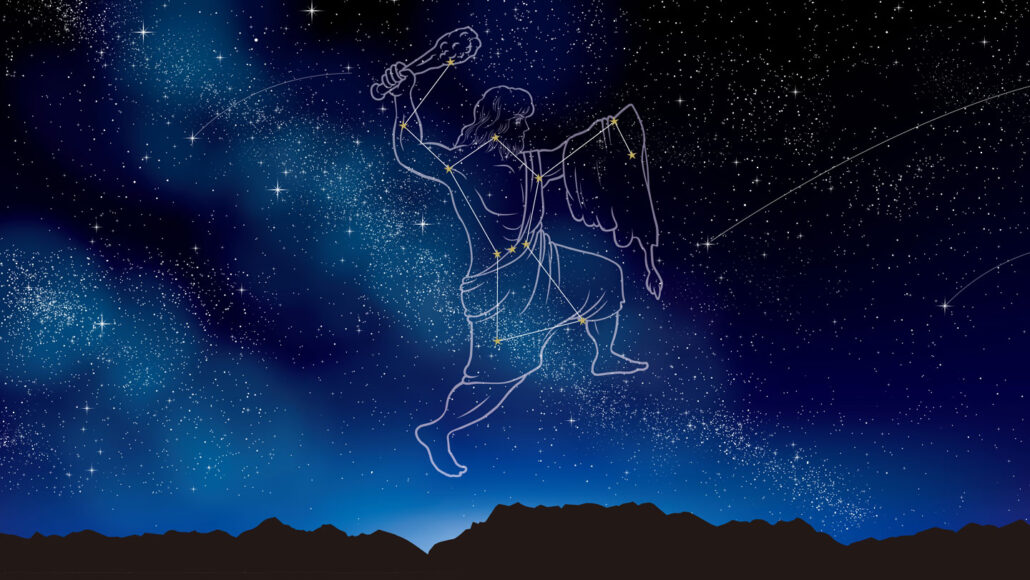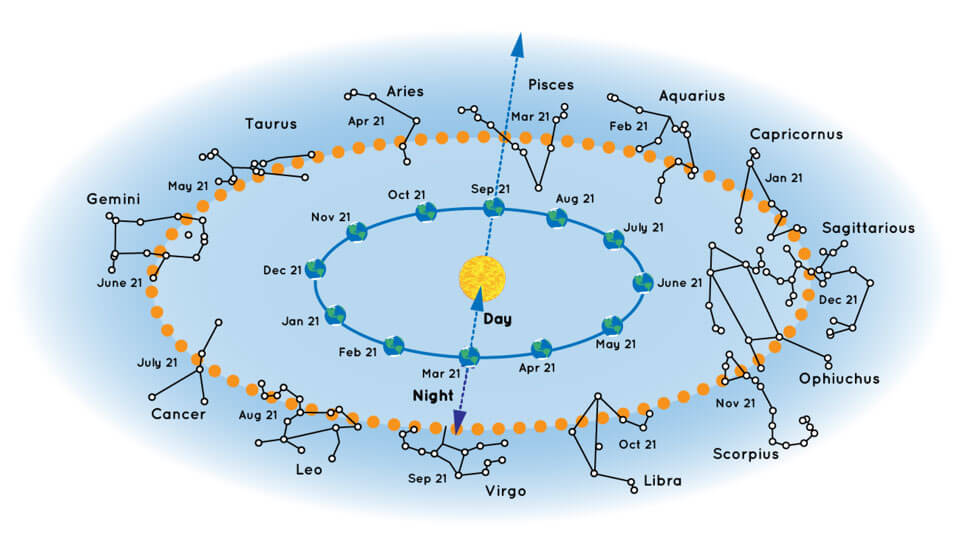Scientists Say: Constellation
This is a cluster of things, such as a group of stars that seemingly forms a pattern in the night sky

One of the most famous constellations in the northern sky depicts the hunter Orion (illustrated).
manpuku7/Getty Images
Constellation (noun, “Kahn-stuh-LAY-shun”)
A constellation is a group or cluster of related things. The best known examples are the groups of stars that seemingly form patterns in the night sky. Those stars may not be close together in space. Some may be much farther from Earth than others. But if lines were drawn between those stars on the sky like a connect-the-dots puzzle, they would create a shape.
Constellations appear to slowly change position — through the night and throughout the year. That’s not because the stars are moving around. It’s because of the Earth’s motion, relative to those stars.
For one thing, Earth rotates, or spins, on an axis. This motion explains why the sun rises and sets. It also causes stars and their constellations to appear to move across the sky over the course of a night.
What’s more, Earth orbits, or circles around, the sun. As it does, the region of space seen from Earth at night — when an observer is facing away from the sun — changes. This is why different constellations appear at predictable times throughout the year. Orion the Hunter, for instance, is seen in the northern sky in winter. Scorpius the scorpion appears in the summer.

Our view of the sky also depends on our location. People in the Northern and Southern Hemispheres look out from Earth in different directions. So, they see different sets of constellations.
Many constellations were named long ago after mythical people, creatures and objects. Today, astronomers officially recognize 88 constellations. Over half were named in ancient Greece. Those constellations, in turn, drew from earlier cultures in Babylon, Egypt and Assyria. Astronomers from Europe later named other constellations.
To modern astronomers, constellations are not just pictures in the sky. Scientists have drawn boundaries around each of the 88 official constellations. Those boundary edges meet, dividing the sky into a puzzle with 88 pieces. Any star within a boundary counts as part of that constellation — even if it doesn’t make up the recognizable pattern. Many stars and other objects are named for the constellations in which they appear.
The constellations do not just provide a way to describe where objects are in space. Throughout history, sailors have used these landmarks in the sky to navigate the seas. And today, robotic spacecraft use star maps to chart their course through space.
In a sentence
The brightness and spacing of stars help explain why some groups form the recognizable patterns of constellations and others don’t.
Check out the full list of Scientists Say.







